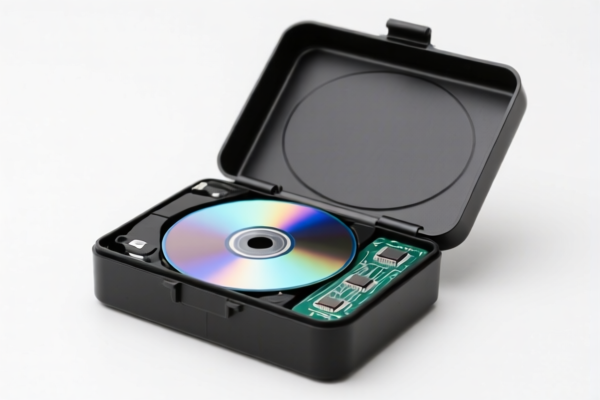| HS Code | Official Doc | Tariff Rate | Origin | Destination | Effective Date |
|---|---|---|---|---|---|
| 8471709000 | Doc | 45.0% | CN | US | 2025-05-12 |
| 8523410000 | Doc | 37.5% | CN | US | 2025-05-12 |
| 8523510000 | Doc | 27.5% | CN | US | 2025-05-12 |
| 8548000000 | Doc | 55.0% | CN | US | 2025-05-12 |




Computer Storage
Computer storage encompasses the technologies and media used to retain digital data. It is a crucial component of computer systems, enabling the preservation and retrieval of information for later use.
Types of Storage
Computer storage can be broadly categorized into several types, differing in their technology, speed, cost, and capacity.
1. Primary Storage (Volatile)
- RAM (Random Access Memory): The main working memory of a computer. Data is stored electronically and is directly accessible by the CPU. It is volatile, meaning data is lost when power is removed. Types include:
- DRAM (Dynamic RAM): The most common type, requiring periodic refreshing of data.
- SRAM (Static RAM): Faster and more expensive than DRAM, used for caches.
- Cache Memory: Small, fast memory used to store frequently accessed data, improving performance. Levels include L1, L2, and L3, with decreasing speed and increasing size.
2. Secondary Storage (Non-Volatile)
These storage types retain data even when power is off.
- Hard Disk Drive (HDD): Traditional storage device using magnetic platters to store data. Offers large capacities at relatively low cost, but slower access speeds compared to SSDs.
- Solid State Drive (SSD): Uses flash memory to store data. Significantly faster than HDDs, more durable, and consumes less power. More expensive per gigabyte than HDDs. Types include:
- NAND Flash SSD: The most common type of SSD.
- NOR Flash SSD: Faster read speeds but slower write speeds, used for embedded systems.
- Optical Discs: Data is stored using lasers to read and write information.
- CD (Compact Disc): Older format, limited capacity.
- DVD (Digital Versatile Disc): Higher capacity than CDs.
- Blu-ray Disc: Highest capacity optical format.
- USB Flash Drives: Portable storage devices using flash memory.
- SD Cards (Secure Digital): Commonly used in cameras, smartphones, and other portable devices.
- Tape Storage: Magnetic tape used for archival storage, offering high capacity and low cost per gigabyte, but slow access times.
3. Network Storage
- NAS (Network Attached Storage): Dedicated file storage devices connected to a network, providing centralized data access.
- SAN (Storage Area Network): High-speed network dedicated to storage, used in enterprise environments.
Purpose and Function
- Data Persistence: Storing data for long-term retention.
- Operating System Storage: Holding the operating system files and applications.
- File Storage: Storing documents, images, videos, and other user files.
- Backup and Archiving: Creating copies of data for disaster recovery and long-term preservation.
- Application Storage: Storing application data and configurations.
Usage Scenarios
- Personal Computers: HDDs and SSDs are commonly used for operating system, applications, and user files.
- Servers: SSDs and SANs are used for high-performance data storage.
- Mobile Devices: Flash memory is used for operating system, applications, and user data.
- Data Centers: SANs and NAS are used for large-scale data storage and management.
- Archival: Tape storage is used for long-term data preservation.
Key Characteristics
- Capacity: The amount of data a storage device can hold (measured in bytes: KB, MB, GB, TB, PB).
- Speed: The rate at which data can be read from or written to the storage device (measured in MB/s or GB/s).
- Interface: The connection method used to connect the storage device to the computer (e.g., SATA, NVMe, USB).
- Cost: The price of the storage device per gigabyte.
- Reliability: The durability and lifespan of the storage device.
- Volatility: Whether the data is retained when power is removed.
Computer storage encompasses various media used for retaining digital data. Based on the provided information, several HS codes may be relevant depending on the specific type of storage.
-
8471709000: This code covers automatic data processing machines and units thereof, including storage units categorized as "Other". This applies to storage units that are part of a larger automatic data processing system. The total tax rate is 45.0%, comprised of a 0.0% base tariff and a 25.0% additional tariff, which will change to 20.0% after April 2, 2025.
-
8523410000: This code is for discs, tapes, and other media for recording sound or other phenomena, whether recorded or not, specifically optical media that are unrecorded. The total tax rate is 37.5%, consisting of a 0.0% base tariff and a 7.5% additional tariff, increasing to 30.0% after April 2, 2025. An example would be blank CDs or DVDs.
-
8523510000: This code covers discs, tapes, and other media for recording sound or other phenomena, whether recorded or not, specifically semiconductor media – solid-state non-volatile storage devices. The total tax rate is 27.5%, with a 0.0% base tariff and a 7.5% additional tariff, which will rise to 20.0% after April 2, 2025. This includes items like USB flash drives or solid-state drives (SSDs).
-
8548000000: This code applies to electrical parts of machinery or apparatus not specified elsewhere. If the computer storage is being imported as a component part, this code may be applicable. The total tax rate is 55.0%, consisting of a 0.0% base tariff and a 25.0% additional tariff, increasing to 30.0% after April 2, 2025.
It is important to determine the precise nature of the "computer storage" being imported to select the most accurate HS code.
Customer Reviews
No reviews yet.